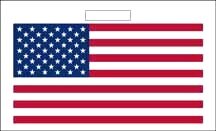Socratic Dialogues in The Classroom
Whiteboarding Do’s and Dont’s
- Yost, D. (2003)
Do
Ask for clarification. Draw simple diagrams. Draw simple graph shapes.
Don’t
Grade the learning process. Badger the student. Include raw data or intricate graphs criticize answers.
Do
Include multiple representations. Be involved. Consider whiteboarding as a learning process.
Don’t
Expect students to provide all questioning. Consider whiteboarding as a presentation or report.
Aren’t whiteboard presentations essentially the same as students giving reports?
While this might at first appear to be the case, it is quite untrue. Whiteboarding involves much more than mere student reporting. Yost (2003) made a clear distinction between whiteboarding and reporting when he wrote, “Whiteboarding and reporting actually have different purposes. The report is a presentation intended to demonstrate competence and is usually graded. Whiteboarding, on the other hand, is an active learning process in which evaluation is an ongoing process designed to probe a student’s prior understanding, and to construct strategies to bring the student to a more complete comprehension.” Reports are often one-way expressions; whiteboard presentations include substantial back-and-forth communication between teacher and student and are teacher directed. In whiteboarding, other students are often asked to join in on the discussion. In the end, two essential goals of whiteboarding are to make explicit student understanding and, when necessary, expose deficiencies in student explanations (Schmitt & Lattery, 2004). Whiteboarding also ensures that allow students to provide a complete evidence-based justification for their conclusions. This is not always the case with mere reporting.
How should a teacher engage classroom students in Socratic dialogue?
It should be noted that the Socratic method per se is discussion process whereby a facilitator promotes independent, reflective, and critical thinking. The conversation that results from using the Socratic method is known as Socratic dialogue. The general goals of a Socratic dialogue are to hold students accountable for learning, make students’ conceptual understanding and thinking processes clear to the teacher and other students, help all students understand how knowledge is constructed from experience, and build autonomy and self-confidence in students’ own thinking in relation to a particular question that is undertaken in common. The teacher never badgers a student, or criticizes answers. He or she merely asks students to explain their reasoning which, if flawed, can be quickly corrected by questions seeking clarification.
What if students are hesitant to participate in Socratic dialogues?
It is not unusual at first to encounter student resistance to Socratic dialogues. Students have often been immersed in a classroom atmosphere where they are treated as receptacles to be filled with knowledge. Socratic dialogues require students to become active pursuers of knowledge. In order for students to be more fully engaged in Socratic dialogues, teachers must address the changed classroom climate, and regularly perform the process of climate setting. Climate setting has two critical components – the role of the teacher and the role of the student. Students need to understand what the authentic role of the teacher is – preparing situations under which students can learn. They must understand that learning is the responsibility of students. Teachers should make clear to students that they might ask questions even if they know the answer; that they might ask “why?” two or three times in a row, and that they might ask student peers to explain and justify their conclusions on the basis of evidence. It is never wrong to seek clarification or to ask questions that deal with extensions of the problem. Teachers must point out that questioning an idea does not mean that it is wrong. Students need to understand that their role is to speak up, confronting apparent fallacies and ask questions when they don’t understand. They must see the educational process as the construction of knowledge in which ideas are based on evidence, clearly stated, and clearly evaluated. They need to know that no question is “stupid”, and that the only poor question is the question that is not asked. Students must assume responsibility for constructing meaning from facts that they have gathered as part of the learning process.
References:
Yost, D. (2003). Whiteboarding: A learning process. Retrieved from: http://modeling.asu.edu/modeling/Whiteboarding_DonYost03.pdf
